Both solutions below by Jimmy and Xenolightining work, however, I still had the problem of the aforementioned error. So, in case anyone else encounters that error, see this link:
http://msdn.microsoft.com/en-us/library/ms228772(v=vs.80).aspx
To summarize the link above (or in case it is ever broken), here is what you do. Add this class to your solution:
public class MessageFilter : IOleMessageFilter
{
//
// Class containing the IOleMessageFilter
// thread error-handling functions.
// Start the filter.
public static void Register()
{
IOleMessageFilter newFilter = new MessageFilter();
IOleMessageFilter oldFilter = null;
CoRegisterMessageFilter(newFilter, out oldFilter);
}
// Done with the filter, close it.
public static void Revoke()
{
IOleMessageFilter oldFilter = null;
CoRegisterMessageFilter(null, out oldFilter);
}
//
// IOleMessageFilter functions.
// Handle incoming thread requests.
int IOleMessageFilter.HandleInComingCall(int dwCallType,
System.IntPtr hTaskCaller, int dwTickCount, System.IntPtr
lpInterfaceInfo)
{
//Return the flag SERVERCALL_ISHANDLED.
return 0;
}
// Thread call was rejected, so try again.
int IOleMessageFilter.RetryRejectedCall(System.IntPtr
hTaskCallee, int dwTickCount, int dwRejectType)
{
if (dwRejectType == 2)
// flag = SERVERCALL_RETRYLATER.
{
// Retry the thread call immediately if return >=0 &
// <100.
return 99;
}
// Too busy; cancel call.
return -1;
}
int IOleMessageFilter.MessagePending(System.IntPtr hTaskCallee,
int dwTickCount, int dwPendingType)
{
//Return the flag PENDINGMSG_WAITDEFPROCESS.
return 2;
}
// Implement the IOleMessageFilter interface.
[DllImport("Ole32.dll")]
private static extern int
CoRegisterMessageFilter(IOleMessageFilter newFilter, out
IOleMessageFilter oldFilter);
}
[ComImport(), Guid("00000016-0000-0000-C000-000000000046"),
InterfaceTypeAttribute(ComInterfaceType.InterfaceIsIUnknown)]
interface IOleMessageFilter
{
[PreserveSig]
int HandleInComingCall(
int dwCallType,
IntPtr hTaskCaller,
int dwTickCount,
IntPtr lpInterfaceInfo);
[PreserveSig]
int RetryRejectedCall(
IntPtr hTaskCallee,
int dwTickCount,
int dwRejectType);
[PreserveSig]
int MessagePending(
IntPtr hTaskCallee,
int dwTickCount,
int dwPendingType);
}
Now wrap the code-generation code (from answers below) with these statements:
MessageFilter.Register();
//INSERT YOUR CODE HERE
MessageFilter.Revoke();
